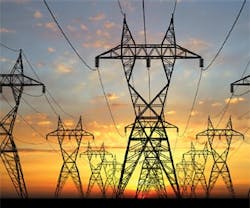As utilities strive to meet the changing demands of the U.S. electrical grid, more and more offer time-of-day pricing, demand-response programs, and other plans tailored to smart buildings.
They're gradually deploying a smart electrical grid that will rely on two-way communication between utilities and customers, potentially resulting in lower electric bills and fewer new power plants. But many buildings aren't ready to welcome these changes. If your smart infrastructure isn't up to snuff, follow these 3 steps to develop a cost-effective plan for preparing your building for the future.
1. Evaluate What You Have
Before taking action, your facility needs a thorough examination covering everything from existing infrastructure to company culture, risk tolerance, and whether the local utility can assist with your upgrade plans.
A comprehensive energy audit can uncover many upgrade opportunities, says Jesse Berst, founder and chief analyst of smartgridnews.com. The resulting savings in energy can help justify the cost of upgrades to building occupants.
"Find a firm that really does a comprehensive energy audit that will uncover all the opportunities you've got, not just the easy, obvious ones," Berst says. "They'll often just recommend lighting swap-outs and such, but they'll miss things like heating, HVAC opportunities, ice storage, demand-response tie-ins, and whole-building energy management systems."
2. Plan and Propose
"Building energy efficiency is the lowest-hanging piece of fruit, and the best way to squeeze the most out of that fruit is building automation," Berst says. "Getting smart buildings to talk to the smart grid is probably the single biggest national opportunity – there's probably more energy savings in that intersection than any other single place."
Programmable thermostats and load controls that can communicate with the utility are a good place to start, Berst says. "It's typical to agree that they can be cut off for no more than X minutes, X times per year. Every so often, you couldn't make a photocopy for 15 minutes or brew a fresh cup of coffee. You're getting money in return for that."
A building-wide platform will provide you with a single console that interfaces with multiple building systems, Berst says. Such a system allows you to root out inefficiencies and communicate with the utility. This communication then allows you to make more educated decisions about when and where to cut back, based on what information you gather from the energy marketplace.
"The facility will automatically adjust loads based on demand response events or energy prices, taking into account the facility's pre-determined parameters for comfort and critical load priorities," says Jeff Wills, director of solutions strategy for Siemens.
Demand-response programs offer a new source of savings, which will help you win the support of key stakeholders in your organization, Wills adds: "It gives the facility manager a new tool to justify some facility improvements because the savings from demand-response programs may offer a potential funding source."
3. Implement, Assess,
and Monitor Improvements
Keep building occupants informed as you implement the building's smart infrastructure. They'll likely alter some of their personal behaviors in the name of conserving natural resources, but they have to be sold on the idea first, Wills says.
"The younger generation entering the workforce seems far more ready to play a part in something bigger than themselves," Wills adds. "If people are willing to participate, all that's left is communicating to them what they can do. My new smartphone could alert me, 'This afternoon from 2 to 4 is a demand-response event. Please help out by unplugging laptops, use the built-in UPS, and turn off monitors. Shut off water coolers, vending machines, etc. Let's do our part to help the environment and the company's bottom line.'"
The monitoring system you've created should generate regular reports verifying that you're meeting your efficiency targets. Make sure you check this system on a regular basis. Why wait for an alert if you can see from recent data that one chiller is consuming increasingly more energy? A smart building armed with tools like these can better adapt to the coming smart grid.
Janelle Penny ([email protected]) is associate editor of BUILDINGS.
About the Author
Janelle Penny
Editor-in-Chief at BUILDINGS
Janelle Penny has been with BUILDINGS since 2010. She is a two-time FOLIO: Eddie award winner who aims to deliver practical, actionable content for building owners and facilities professionals.

